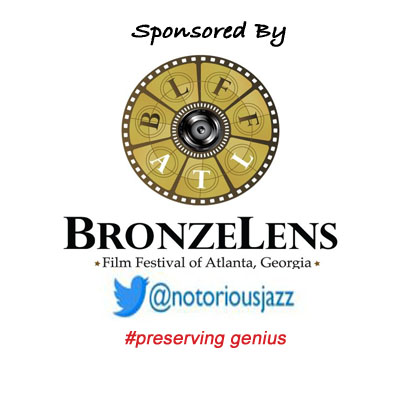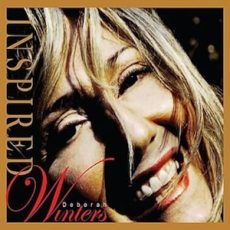
Daily Dose Of Jazz…
Deborah Winters was born on September 15, 1966 in San Francisco, California and her childhood was immersed in music and dance with first influences from her drummer father, and a ballet dancer mother with the Oakland Metropolitan Ballet Company. Developing a passion for music, dance and theatre at a very early age, big band sounds rang through the house.
Moving around the country with her family as an adolescent, Deborah studied voice and guitar. She became influenced by singer/songwriters James Taylor, Joni Mitchell and Rickie Lee Jones. Her desire to sing and play the guitar led her to playing clubs and into the studio to record a few of her own compositions before graduating.
Her musical palate expanded to include jazz standards and contemporary musical forms. Performing around San Francisco she would go on to work with Tony Williams, Bobby McFerrin and his Voicestra group, Frank Martin, and Jose Neto. She released her debut recording, live “in session” on her Pure Passion Productions label. Her sophomore release Inspired, exhibits her introspective side. Her third release centers on big bands, traversing the expanse of jazz history.
Vocalist Deborah Winters continues to search for new ways to express her music in her evolution as a singer, guitarist and songwriter.
More Posts: bandleader,history,instrumental,jazz,music,vocal
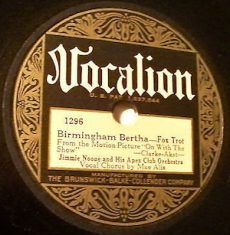
Daily Dose Of Jazz…
May Alix was born Liza Mae Alix on August 31, 1902 in Chicago, Illinois and began her career as a teenager after winning a talent contest. She performed with the Jimmie Noone band in the clubs around the city. She later worked with bandleaders Carroll Dickerson, Duke Ellington, and Luis Russell.
She earned the nickname “Queen of the Splits” for the dance choreography included in her show, where she would do a split for every dollar thrown by a customer. Soon she joined Ollie Powers as a duo performing in cabarets.
1926 saw her recording with Louis Armstrong and His Hot Five, one being Big Butter and Egg Man, which became Armstrong’s first chart hit. She went on to collaborate with Jimmie Noone on half a dozen recordings for Vocalion Records at the end of the decade including Ain’t Misbehavin, My Daddy Rocks Me, and Birmingham Bertha/Am I Blue?.
During the 1930s and early 1940s, she performed mainly in New York City. Jazz singer Alberta Hunter sometimes recorded under the name “May Alix”, with the permission of the real May Alix.
Vocalist May Alix, who left show business in 1941, died on November 1, 1983.
More Posts: bandleader,history,instrumental,jazz,music,vocal
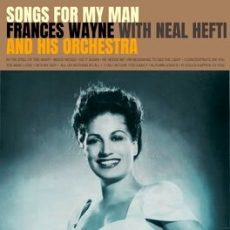
Daily Dose Of Jazz…
Frances Wayne was born Chiarina Francesca Bartocci or Clara Bertocci on August 26, 1924 in Boston, Massachusetts. She graduated from Somerville High School. Moving to New York City in her teens she sang in an ensemble led by her brother, saxophonist Nick Jerret.
In the early 1940s she recorded with Charlie Barnet’s big band, and in 1943 sang with Woody Herman’s band. Marrying Neal Hefti in 1945, Frances soloed in her husband’s big band formed in 1947. In addition to her solo career she sang with Hefti into the 1950s.
She later sang with smaller ensembles featuring Hank Jones, Milt Hinton, Jerome Richardson, Richie Kamuca, John LaPorta, Billy Bauer and Al Cohn. On The Woody Herman Show broadcasted on the radio, Wayne was his female vocalist.
On February 6, 1978, vocalist Frances Wayne, who received the 1946 Esquire Award as Best New Female Vocalist, died after suffering from cancer over an extended period in her hometown at age 58.
More Posts: bandleader,history,instrumental,jazz,music,vocal
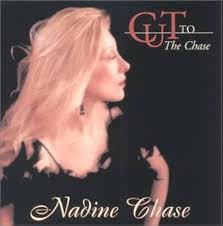
Daily Dose Of Jazz…
Nadine Chase was born August 23rd and grew up in Brooklyn, New York. A versatile vocalist over the years, she has performed with her trio and big band orchestras in many of Boston’s finer hotels and jazz clubs.
Each year, she and her trio volunteer their time and talents to Brookline’s First Light celebration to help support the arts in Brookline schools. They play major fundraisers for the Fenway Community Health Center and perform at inaugural celebrations and special events.
She is active in the Institute of Noetic Sciences, and the Society for Organizational Learning about creativity in business and assisting individuals to help find their voice. In 2001 she recorded and released her debut album Cut To The Chase which was nominated for a Grammy as Best Jazz Vocal Album.
Vocalist Nadine Chase, who is a member of the National Academy of Recording Arts & Sciences, the Boston Musicians Local 9-535, and the Boston Association of Cabaret Artists, continues to perform.
More Posts: bandleader,history,instrumental,jazz,music,vocal

The Jazz Voyager
Since I’ve been hanging out in the Big Apple for two weeks, I thought I’d head upstate to Tarrytown for a change of seasons and take in the fall colors that are always so beautiful. This week I’ll be at the Lyndhurst Mansion overlooking the Hudson River on the land that was originally hunting grounds of the indigenous Lenape/Munsee tribe that were the first inhabitants of the Hudson Valley. I’m traveling to this location to partake in the Summer Concert Series promoted by the Jazz Forum Arts.
The concert series is free but there is a ten dollar fee to enter the estate. Little expense to view the grounds and be entertained by swing/bop vocalist Nancy Kelly who is headlining this evening. I love being introduced to new places and performers I’ve never heard before. This should prove to be an amazing time.
Lyndhurst is located at 635 S Broadway, Tarrytown, NY 10591. For more information visit https://www.jazzforumarts.org.
More Posts: adventure,bandleader,club,genius,preserving,travel,vocal



